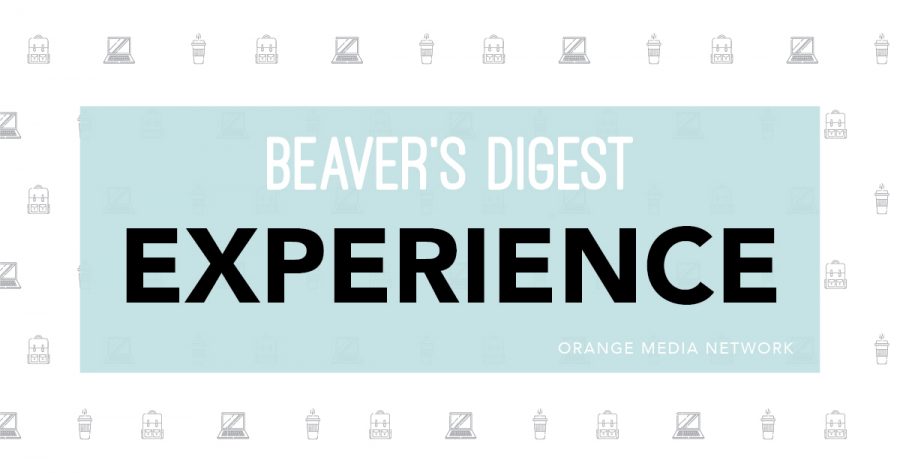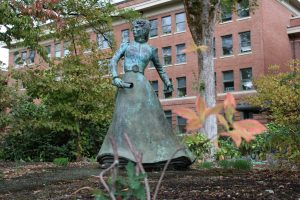A look at Oregon State University’s environmental impact
January 24, 2019
One of Oregon State’s selling points as a university is its contribution to a cleaner environment. According to the OSU website, Corvallis is ranked as one of the smartest, greenest small cities in the nation and the campus has a variety of groups and initiatives dedicated to keeping Corvallis green. However, there is more to be done and upon further inspection, the university could be doing more to save the environment.
“Most of what goes on with sustainability is because of the students contributing the sustainability fee, which originated in my class,” Steve Cook, senior instructor II in the geography department, said. “When you get beyond the sustainability fee’s impact on campus, it gets pretty damn thin. The Ray administration isn’t very interested in sustainability, it’s just not on his radar.”
Cook has taught geography 300, “Sustainability for the Common Good” for about 20 years. Cook explained that about 16 years ago, he had his students survey random people on campus to see if they would be willing to pay a sustainability fee as part of tuition. Many people said they would be willing, so he took the data to the recycling official at the time, who took the data to student government.
“[Our reputation for being a green campus] is because of that student sustainability fee,” Cook said. “When you get beyond that, it’s pretty thin. For eight or nine years, University of Oregon had a deal that for every new building they built, they had to retrofit an old building. So there was no net increase in energy consumption for the campus, even though they had all these new buildings.”
While certain buildings including the Student Experience Center, LINC and Austin Hall are relatively new, there are also many buildings that have been a part of the university for many decades, and it shows.
“I’m teaching this term in the basement of Milam, they have put carpeting on the floor of the room I’m in, but the windows are from 1927,” Cook said. “You can take the window and rattle it. Instead of putting carpeting on the floor why didn’t we put in double paned windows? Weniger down here is four stories of single paned windows. One of the physics professors calculated how many BTU’s of energy is leaking out of that building every second, it’s huge.”
According to Oregon State’s “Sustainability at OSU” webpage, there are many large and small-scale projects going on around campus to improve energy efficiency. Additionally, the Oregon State University Sustainability for 2017 fiscal year highlights many initiatives at OSU which move toward a higher degree of sustainability. These include Pedal Corvallis, Green Office Certification, Grants from the Department of Energy, the sustainability double degree and minor and the Beaver Athlete Sustainability Team.
Despite these efforts, OSU received a negative “Sustainability, Tracking, Assessment, and Rating System” score in the categories for buildings, air and climate, energy, food and dining and investment and finance. All of these categories received a score of 50 percent or less in both 2017 and 2016 reports.
“We have a power plant on campus, it’s much better than the old one, there’s no doubt about it,” Cook said. “It could run on woodchips, but that’s too much bother to have this pile of woodchips, so they plugged it into the natural gas line. Sure, it’s better than burning coal, but we live in Oregon if anybody has a lot of wood chips, it’s us. But it was just a hassle so they didn’t do it.”
For students who may be wondering how they can help make Corvallis greener, Cook explained that there are some easy changes students can make that add up to a more healthy environment.
“Eat less industrial beef. Huge amounts of carbon dioxide, huge amounts of resources go into this. It takes 12 to 15 pounds of feed to produce one pound of beef. Their digestive system puts methane into the atmosphere which is 20 to 30 times more powerful than carbon dioxide,” Cook said.
He noted that there are studies that show properly pasteurized cows stimulate the environment, and allow soil to store more carbon dioxide, but industrially farmed beef is the problem.
“Something that bugs the hell out of me is that we all walk past an empty classroom with the lights blazing away and nobody reaches in and turns them off,” Cook said. “I had a night class and I left the lights on from the time I got there, at 6 o’clock, and they would’ve stayed on until 8:00 or 9:00 the next morning. That room used more electricity than my house would in a week. Just by leaving the lights on one night. A lot of juice goes into these lights. A few of them have LED, but most are still burning those old neon tubes, using huge amounts of energy. This is our home, this is our city. Turn the lights off.”
Many of the changes you can make to save the planet have additional benefits. Cook explained that when teaching sustainability, he likes to combine the philosophy of sustainability with economics to get the attention of his students, and show that you can save money while saving the environment.
“You can ride your bicycle one day a week instead of driving a car,” Cook said. “If an old guy like me can ride four miles back and forth to school, then a bunch of healthy students should be able to ride half a mile or a mile for a beer run or whatever. During the time of year when it’s not so humid, we can dry our clothes on a clothes rack. If you happen to live in a place that has an outside clothesline, for seven months of the year we can dry our clothes outside. A clothes dryer is the second biggest consumer of energy after space heating. The fan picks up air inside the building, and it blows it outside. So you just spent a bunch of money to heat your apartment, and now you’re blowing it out into the atmosphere. Anytime you can use a clothes rack, it saves a lot of energy and it saves your clothes. The lint in the lint screen comes from your clothes.”
While the biggest contributors to global warming are often big corporations, it’s still important to do your part to save the earth. “We have to think that individual actions when taken by a lot of people, make a difference. We can’t wait for those clowns up there to solve all our problems, because currently, our administration believes these problems don’t exist,” Cook said. “We get a little more at the state level, but really it goes back to if we all just save a little bit, it matters.”






